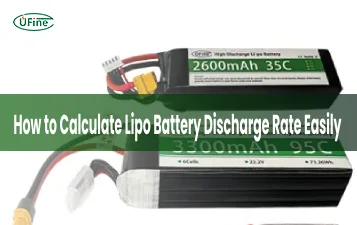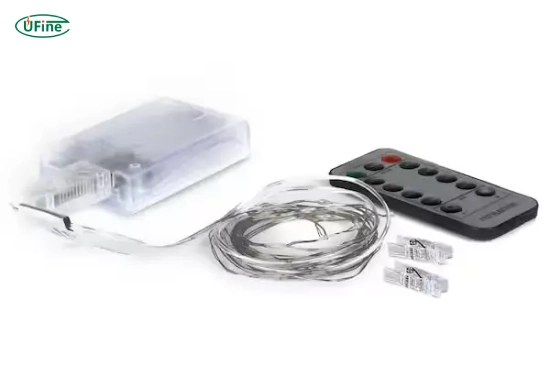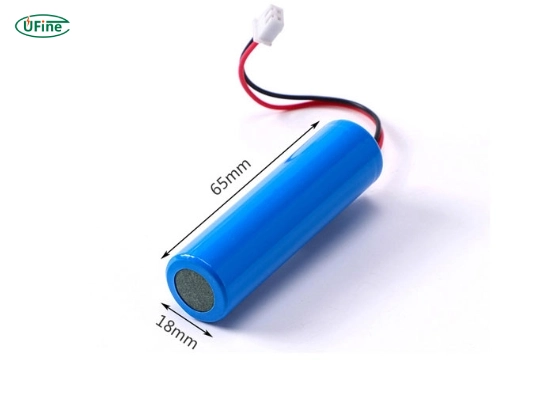Suppose you’re asking how to source bulk light string battery packs for your store. In that case, you’re likely looking for a reliable supply chain, competitive pricing, and customizable options that meet the latest consumer trends. Whether you’re an online seller, a physical retailer, or a brand looking to expand your lighting product line, this guide will walk you through the entire process—from choosing suppliers to branding and logistics.
Let’s discuss everything in detail to help you make smarter sourcing decisions that lead to better margins and happier customers.
Part 1. What is a light-string battery pack?
A light string battery pack is a compact, portable power unit that supplies electricity to string lights without needing a wall outlet or wired power source. It’s most commonly used with LED string lights, but some models also support traditional incandescent bulbs.
These battery packs are typically powered by:
- AA or AAA batteries
- Coin cell batteries (e.g., CR2032)
- Rechargeable lithium-ion batteries
Some advanced models even offer USB charging or solar charging options.
They’re popular because they enable cordless lighting, making them ideal for:
- Home Decor
- Outdoor events
- Weddings
- Holiday decorations
- DIY crafts
- Retail window displays
Part 2. Why source light string battery packs in bulk?
Sourcing in bulk is a smart strategy for running a store or selling online. Here’s why:
- Lower cost per unit
Buying in volume dramatically reduces your cost per item, giving you better profit margins. - Consistent inventory
Avoid stockouts and shipping delays by keeping a healthy inventory on hand. - Private labeling opportunities
Bulk orders often open the door to brand customization, making your product stand out. - Faster fulfillment
Having battery packs in-house allows you to ship orders quickly—which is especially important during peak seasons. - Supplier loyalty and better terms
Suppliers often offer better deals and faster service to long-term, high-volume customers.
Part 3. Who are the main users of light string battery packs?
Knowing your target market helps you stock the right types of battery packs. Here are the most common customer groups:
- DIY crafters who use battery-powered lights in art projects
- Event planners looking for portable lighting for weddings, parties, and corporate events
- Home decorators using ambient lighting in bedrooms, patios, and living rooms
- Retailers who bundle lights and batteries during holidays
- Etsy sellers and small business owners creating handmade lighting products
Understanding their needs helps you choose battery packs with the right features—like timers, remote controls, or waterproofing.
Part 4. What features should you look for in a quality battery pack?
Not all light string battery packs are created equal. Here are the key features that determine quality and performance:
- Battery compatibility
Check what type of batteries the pack supports (AA, AAA, CR2032, rechargeable lithium, etc.). - Voltage and capacity
Make sure the power output matches your string light requirements. Underpowered packs result in dim lights or short runtimes. - Waterproof design
If your customers plan to use the lights outdoors, IP44 or IP65 waterproof ratings are essential. - Safety certifications
Look for CE, RoHS, FCC, or UL certifications to ensure the product is safe and compliant. - Build quality
The casing should be durable plastic or rubber to withstand drops, moisture, and heat. - Switch type
Options include push buttons, slide switches, or remote-controlled modules. - Additional functions
Some battery packs include features like timers, flashing modes, or dimming for added convenience.
Part 5. Where can you source light string battery packs?
There are several sourcing options, each with its pros and cons. Here’s a breakdown:
- Wholesale marketplaces
Platforms like Alibaba, DHGate, and Global Sources allow you to connect directly with manufacturers. You can compare prices, read reviews, and negotiate MOQs (Minimum Order Quantities). - Direct from manufacturers
Sourcing directly from the manufacturer cuts out the middleman and gives you greater control over product customization and pricing. One such trusted supplier is Ufine Battery, which specializes in highly customizable lithium battery packs for light strings.
They offer:
- OEM/ODM services
- Custom voltages and battery capacities
- Waterproof and outdoor-safe batteries
- Branding and packaging customization
- Local distributors
Local importers or wholesalers are a good choice for faster delivery and smaller quantities. However, they may have higher per-unit prices. - Trade shows and expos
Events like the Canton Fair offer hands-on opportunities to inspect products and build supplier relationships. - Dropshipping platforms
Ideal for testing the market but not cost-effective for long-term bulk sourcing.
Part 6. How to evaluate a supplier before placing a large order?
Before committing to a bulk purchase, always vet your suppliers carefully. Use this checklist:
- Request samples to test build quality and performance
- Check certifications (ISO 9001, UL, CE, RoHS)
- Read reviews and ask for client references
- Confirm lead times and production capacity
- Negotiate payment terms (50/50, 30/70, or escrow for first orders)
- Review their return and refund policies
A transparent, communicative supplier is essential for long-term success.
Part 7. Consider customizing your battery packs.
Especially if you want to differentiate your store from competitors, OEM (Original Equipment Manufacturer) and ODM (Original Design Manufacturer) services allow you to create custom light string battery packs with:
- Unique shapes or sizes
- Custom voltage or capacity
- Specialized features like timers or solar charging
- Branded packaging and logos
Ufine Battery offers comprehensive OEM/ODM services tailored to your needs. Whether you want a waterproof outdoor battery pack or a slim model for indoor fairy lights, they can design it for you.
Customization boosts your brand value and builds customer loyalty.
Part 8. How to calculate profit margins?
Here’s a basic formula for calculating profitability:
Profit per unit = Selling Price – (Cost per unit + Shipping + Fees + Marketing)
Let’s say:
- Your source each battery pack for $2.50
- Shipping and import duties add $0.80
- You sell it for $9.99
Your profit is $9.99 – ($2.50 + $0.80) = $6.69 per unit, which is over a 65% margin.
Aim for at least 30–50% margins to stay sustainable while covering all operational costs.
Part 9. What are the potential challenges in sourcing?
While sourcing can be profitable, there are some risks:
- Quality inconsistencies if you don’t perform regular inspections
- Delays in manufacturing during holidays
- Language barriers with overseas suppliers
- Customs clearance issues if paperwork isn’t in order
- Hidden costs like warehousing, exchange rate fees, or damaged goods
To minimize risks, build strong relationships with suppliers, use clear contracts, and always start with a small trial order.
Part 10. How to stay competitive in the light string battery market?
The battery-powered lighting market is crowded, but you can still gain an edge by:
- Offering exclusive features like solar charging, dimming, or remote control
- Creating bundles that include both string lights and battery packs
- Investing in professional photography to make your listings stand out
- Collecting and displaying reviews on your product pages
Also, consider seasonal trends. Stock holiday-themed battery packs or waterproof outdoor models during summer and winter.
Part 11. FAQs about light string battery
What is the best battery type for light string battery packs?
AA and AAA alkaline batteries are the most commonly used because they’re affordable and widely available. However, rechargeable lithium-ion batteries are gaining popularity for their longer lifespan and sustainability.
Can I use rechargeable batteries in light string battery packs?
Yes! Most packs are compatible with rechargeable NiMH or lithium batteries. They’re cost-effective in the long run and better for the environment.
How long do light-string battery packs last?
Battery life depends on the battery’s capacity and the lights’ power draw. On average:
- AA-powered packs last 20–60 hours
- Coin-cell versions last 10–30 hours
- Rechargeable lithium packs can last up to 100 hours per charge
Are these battery packs waterproof?
Some are, and some aren’t. If you plan to use them outdoors, look for battery packs rated IP44 or IP65. Always confirm the product specs with your supplier.
Can I brand my light-string battery packs?
Yes, and this is where you can stand out. With suppliers like Ufine Battery, you can:
- Add your logo on the casing
- Customize the packaging
- Choose battery configurations that match your branding
- Create a fully branded lighting kit
Branded products help build trust and boost repeat purchases.
Related Tags:
More Articles

LiPo Battery Discharge Rate Guide & Calculation Tips
Understand LiPo battery discharge rates, C-ratings, and how to calculate max current. Essential guide for RC, drones, and electronics users.
High‑Capacity 3S LiPo Batteries: 5000 mAh vs. 10000 mAh
Compare 3S LiPo 5000mAh vs 10000mAh batteries by weight, power, and use. Find the best fit for your drone, RC car, or boat setup.
Top 5 Applications for Small 3S LiPo Batteries
Small 3S LiPo batteries power drones, RC gear, wearables, and robotics with high energy and low weight. Making them ideal for compact electronics projects.
Building and Charging Your Own 3S LiPo Pack: A Step‑by‑Step Guide
Learn how to build, balance, and charge a 3S LiPo battery pack safely at home with this complete DIY guide for hobbyists and beginners.
How to Choose the Right LiPo Battery Plug Type?
Discover the best LiPo battery plug types, how to choose them, and expert tips for safe usage, soldering, and maintenance.





